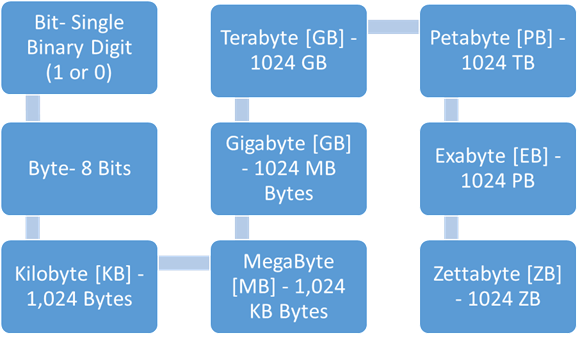Security Recorder Storage Calculator

The main reason we look to own a CCTV system is the ability to have recorded documentation of all crucial events that take place. Recorded accountability to help resolve “could have been” mysteries, and of course, aid in the process of catching a perpetrator. Our CCTV Hard Drive Calculator can help you make sure you have adequate space to capture and retain your footage for your desired requirements.
Security Storage Calculator
How to Use:
First, enter the number of cameras you have or want to have. Then select the resolution you will be recording at. Next, input the desired frames per second. Then, how many hours a day will you be recording, and how many days a week will you be recording?
Note: If you are recording on motion event only, you may want to decrease the “Hours per Day” for a more accurate calculation (*Average Record on motion is about 8 hours per day).
Breaking down the nominations of Bytes
Have you ever asked yourself what a hard drive is or ever wondered about the significance of its role? Perhaps puzzled by its “not-so-common” measurement scheme? To have a better understanding of a hard drive also referred to as an HDD or Hard Disk Drive, let’s first grasp the concept of the units of measurement that make up a hard drive. Just as 4 quarts make a pint and 100 pennies make $1.00, the increments of a hard drive begin with a single Binary Digit known as a Bit. 8 of these Bits form a Byte, and 1,024 bytes form a Kilobyte. 1,024 Kilobytes make ONE Megabyte, and (notice the pattern) 1,024 Megabytes create a Gigabyte. 1,024 Gigabytes begets ONE Terabyte and 1,024 Terabytes form ONE Petabyte. As with our numerical system, the numbers keep compiling until you can no longer fathom. Now that you know the consistency of these volumes, let’s try to answer the following:
Quiz
Let’s say (hypothetically) you own one camera. Every hour that camera records 1MB of data. How many hours till you have enough footage to fill a 2TB hard drive? How many Megabytes will you have? How many Kilobytes?

Making any sense yet? I’m hoping you answered yes. Moving on, did you know there are also multiple forms of these Hard Drives? From form sizes, capabilities, and connection types to internal and external. In this era, the most commonly used (and affordable) are known as SATA Hard Drives. Now, depending on your demands and needs (of course, your device compatibility hardware as well), choosing the correct hard drive can mean the difference between efficiency and battling impatience. For those of you ready to pick out your hard drive for your DVR or other devices, please click here.
NOTE: These calculators are provided for general information only and are not intended as a substitute for professional consultation. We advise you to call us if you have any questions about the accuracy of this information or if you need help interpreting this information. Security will not be held liable for damages resulting from the use, misuse, or unlawful use of the information contained herein.
